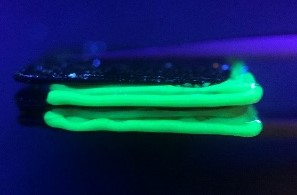Volumes & Issues
Contact
For any inquiries regarding journal development, the peer review process, copyright matters, or other general questions, please contact the editorial office.
Editorial Office
E-Mail: advmanufact@elspub.com
For production or technical issues, please contact the production team.
Production Team
E-Mail: production@elspub.com
No items found.
Creating custom 3D printing material colors using optical modeling of waste plastic
DOI: 10.55092/am20250007
Received: 13 Dec, 2024
Accepted: 13 Mar, 2025
Published: 07 Apr, 2025
Distributed recycling and additive manufacturing (DRAM) offer a unique promise for obtaining a circular economy. To maintain or even enhance the value of common 3D printing feedstocks like polylactic acid (PLA) waste an approach to further incentivize prosumers to use recycled feedstocks is to provide something the market currently does not—custom filament colors. To enable prosumers to create custom colors from their own recycled 3D printing waste this article presents a new open-source software named SpecOptiBlend. Specifically, this study introduces a novel method for customizing color filaments by recycling waste 3D printing samples, thereby enhancing the capabilities of color 3D printing. Traditional 3D printing is limited by a narrow range of filament colors, and even multi-color printing heads can utilize only a limited number of colored filaments among the available options. The new approach here repurposes discarded prototypes and unused samples back into the printing cycle with desired colors, allowing for a broader spectrum of colors and gradients. This enables engineers and designers to create more intricate and functionally graded materials. To do this, waste plastics are quantified after processing for spectral reflectance, then Kubelka-Munk theory provides the initial estimate for color mixing. Three discrete optimization techniques are applied: Nelder-Mead, Limited-memory BFGS with bounds, and Sequential Least Squares Quadratic Programming. To determine the optimal method, assessment criteria include the application of root mean square (RMS) and the color difference (ΔE CIE-2000). Three case studies were conducted, and the Nelder-Mead method was found to provide an optimal balance between the precision of color differences and the RMS, essential for producing high-quality colors. This research has provided a free tool that will now enable prosumers to convert their plastic waste into specific custom colors to enable DRAM.
A framework and implementation of the Customer-to-Manufacturer (C2M) paradigm
DOI: 10.55092/am20240004
Received: 13 Dec, 2023
Accepted: 11 Mar, 2024
Published: 19 Mar, 2024
With the advancement of pervasive commerce on the Internet, the way to purchase consumer products has been changing to personalized products with preferred individual customization. A new manufacturing paradigm named “Customer-to-Manufacturer (C2M)” has been prevalent in the E-commerce sector and the context of Industry 5.0. It establishes a direct connection between consumers and manufacturers via E-commerce platforms, allowing individual clients to participate in the model design process alongside engineers to fulfill their specific requirements. Moreover, it aims to provide manufacturers with systematic approaches for producing customized products more efficiently, resulting in shorter delivery times, lower inventory costs, and higher customer satisfaction and loyalty. In this paper, the authors briefly review the evolution of the manufacturing paradigm, suggest a structurally well-defined C2M concept, and propose a framework for C2M that utilizes contemporary digital technologies in the context of Industry 5.0 to streamline the manufacturing-to-delivery process through intelligent, human-centric, resilient, and environment-friendly design and manufacturing solutions. Additionally, a case study for the implementation of C2M has been explored. The findings of this study suggest that the C2M paradigm is an effective way to meet the growing demand for customization and personalization in E-commerce. It not only improves customer satisfaction and loyalty but also has the potential to improve supply chain efficiency and reduce costs for both sides. E-commerce retailers or manufacturing enterprises may consider adopting a C2M paradigm for online customization to stay competitive in a rapidly evolving market.
3D Printed tandem X-Ray detector with halide perovskite-polymer composite semiconductor absorber
DOI: 10.55092/am20230002
Received: 27 Aug, 2023
Accepted: 18 Oct, 2023
Published: 23 Oct, 2023
A semiconductor-polymer composite was developed in this work consisting of inorganic halide perovskite (CsPbBr3) crystals embedded in polylactic acid (PLA) matrix. The composite exhibits the essential semiconductor properties of CsPbBr3 and the easy processability of PLA, enabling 3D printed tandem X-ray detectors. The tandem detectors demonstrated a sensitivity of 383 μC Gyair-1 cm-2 when four layers and total 600 µm thick CsPbBr3-PLA were printed. This sensitivity is 23X of single-layer detectors with same absorber thickness. The result indicates that 3D printed tandem detectors can overcome the X-ray absorption vs. charge carrier collection tradeoff in conventional single-layer detectors towards high performance radiation detection.
No items found.
No items found.
No items found.




